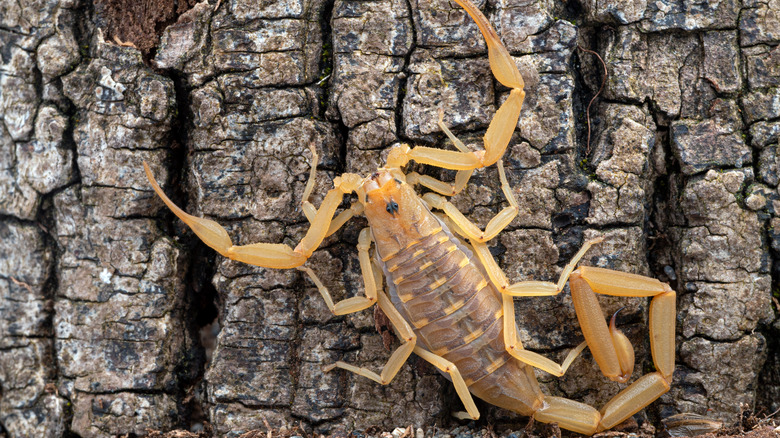The Venomous Creature That's Swarming Arizona
The Grand Canyon is one of the most iconic landmarks in Arizona, attracting more than 4.5 million visitors every year. While this natural wonder is also one of the greatest canyons in the world, it's full of poisonous species, like rattlesnakes and Gila monsters (lizards). Although such creatures can be found outside of the national park, it's the venomous bark scorpion that's more likely to invade Arizona homes.
Arizona has more than 50 species of scorpions, but the most common is the bark scorpion, which is also the most venomous in the United States. While the sting is very painful, it typically only causes numbness, tingling, and vomiting at most. It's rare for such a sting to be fatal, with only two deaths on record since the 1960s. However, the sting can feel different from one person to another, and children, the elderly, and immunocompromised people could have severe reactions.
Although Arizona bark scorpions are like other plants and animals that adapt to desert lands, they prefer habitats near water and can be found in urban and suburban areas. Also, bark scorpions are most active during rainy times of year, and since they like cooler temperatures, they come out of hiding during the night rather than bask in the sunlight. The scariest part is how sneaky and illusive bark scorpions can be, creeping into homes to take cover from the summer heat or to hibernate from the winter cold. These arachnids are proficient climbers, too, finding their way into the most unexpected places. Their diet of small insects can even attract them indoors or into backyards, where logs and rocks are attractive shady spots.
Identifying the Arizona bark scorpion and staying safe
If you live in Arizona, knowing exactly what to look out for can help you avoid getting stung by a bark scorpion. These arachnids have tan bodies with slightly darker backs and are fairly small, growing only up to 2.5 inches long. Their bodies have two parts: a fused head and thorax (cephalothorax) and an abdomen with a tail, which has five segments and a stinger at the tip. Additionally, they have eight legs and two segmented appendages (pedipalps) for sensing their surroundings and grabbing prey.
Fortunately, you can take a few precautions against Arizona bark scorpions finding their way into your home. Make sure the weatherstripping around your doors is in good condition, and don't leave clothes, blankets, shoes, or other items you wear outdoors, especially overnight since that's when they're most active. To check areas for scorpions, consider carrying a black light. All known species of scorpions illuminate under a black light because of a compound in their carapace. For additional preventive measures against scorpions, pest control can create a barrier around your property to deter them from entering.
If you identify an Arizona bark scorpion in your house, don't linger or run away. Instead, calmly move away and find something to capture and release it outdoors safely. But you don't want to provoke it in any way. If, by chance, you get stung, seek medical attention if you think you might have a serious reaction.

